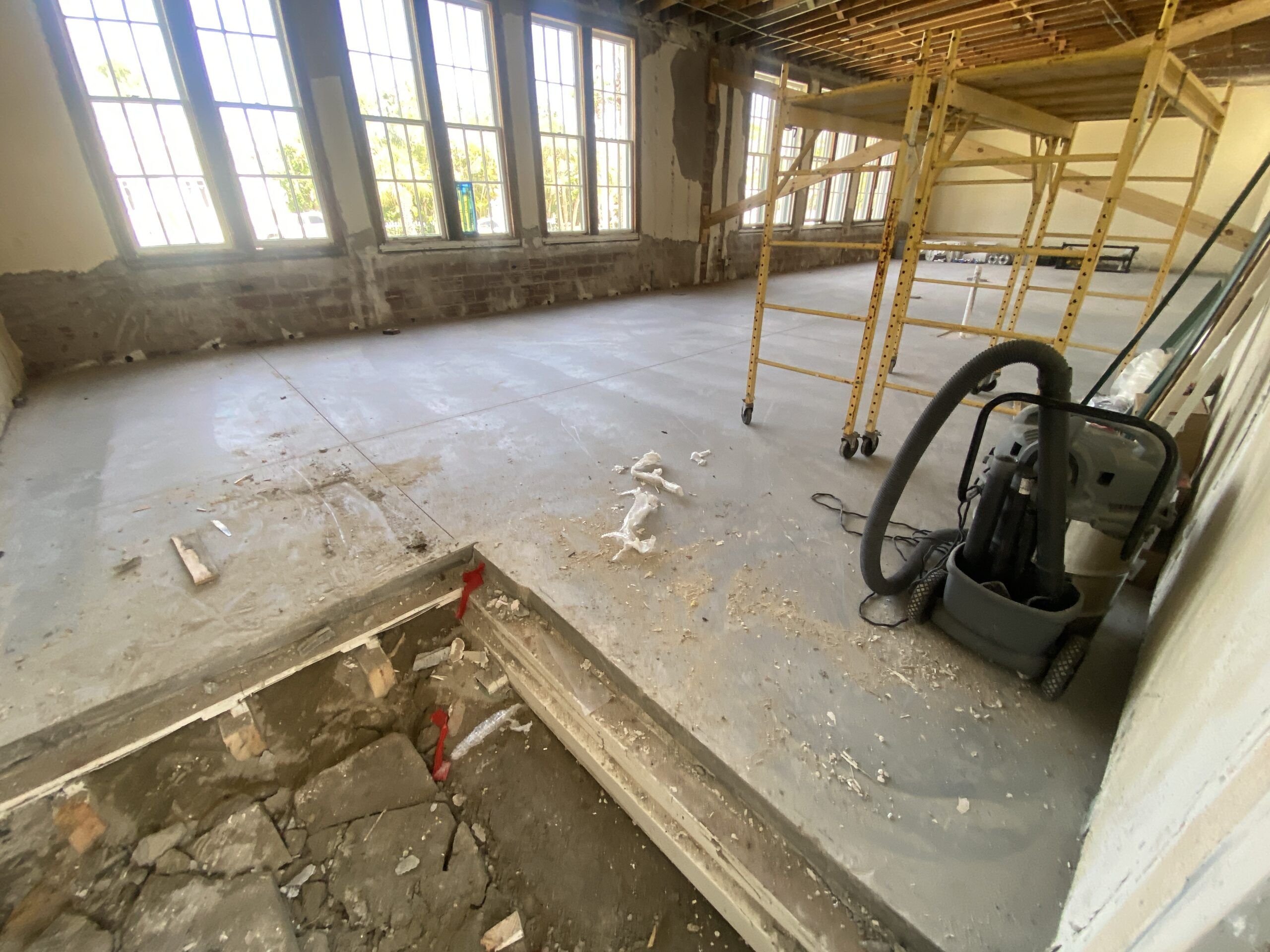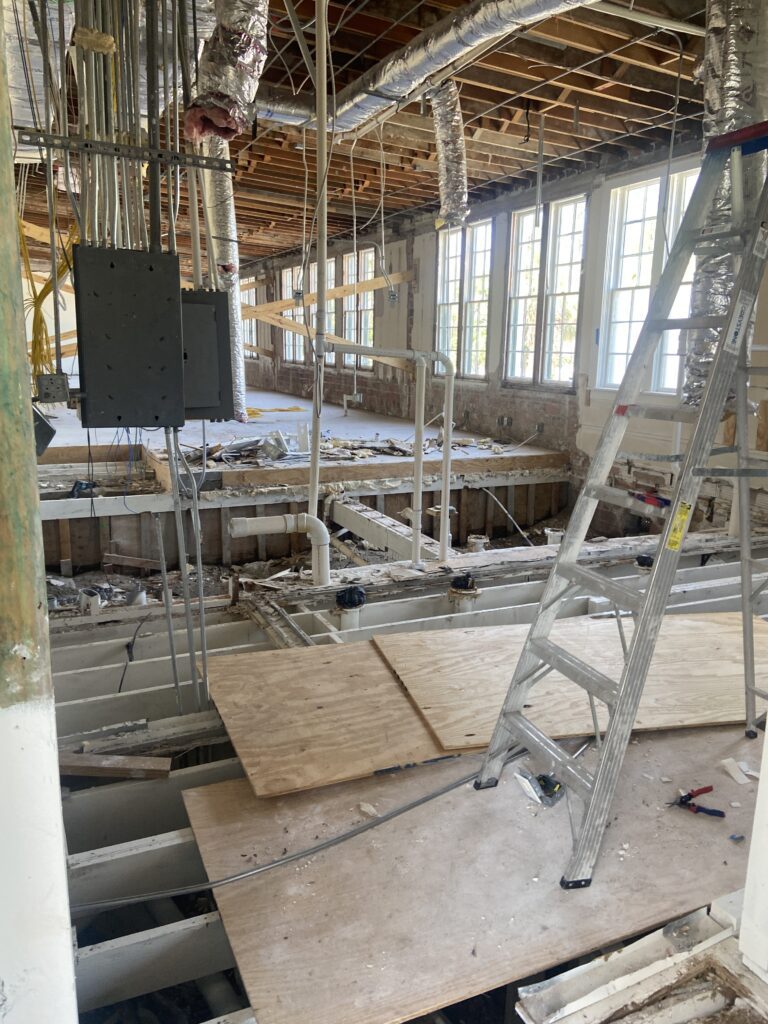Hardening history for future storms: How much to raise

At its February meeting, the Boca Grande Historic Preservation Board reviewed the first case of the elevation of a historic island house to above-flood level. At the meeting, Lee County planner Peter Blackwell gave guidance on how to best encourage the preservation of historic structures in flood-prone areas.
“With all of the damage caused by the trio of hurricanes, a lot of people are needing quick address of problems,” said Blackwell at the time. After the hurricanes, and particularly in Matlacha, he said that the county allowed staff to administratively approve elevations if the footprint did not change.
Since that guidance, and in subsequent meetings, the board has approved a number of house raisings, all unanimously. In each case, the change to the Boca Grande Historic District has been minor, and the overall feel of the island’s architectural heritage has not changed.
In February, they approved the elevation of a guest house at 300 3rd St., on Whiskey Row. This house was raised just over five feet, in a design by Holmes King Kallquist & Associates. The house was to remain exactly as it was, except for new piers. The base, which was open to air, allowed water to flow through panels and lattice.
In March, the board approved a number of nearby house raisings, including two properties at 255 Whiskey Row. At the same meeting, 331 Tarpon Ave. was proposed to be elevated by 1.7 feet, though the garage remained at grade. The base elevation went from 6.3 feet to eight feet, North American Vertical Datum – one standard for elevations. Lee County staff remarked that the amount of the elevation was “not enough to create a visually significant change in the property.”

The most notable house raising approved in the historic district this spring is the Spanish-style house at 231 Park Ave., which was approved in April 2025. The landmark house, built in 1930 and sitting on the corner of Banyan and Park, will be raised four feet. The process of gutting the house to raise it is extensive; even the historic doors were taken out in a plan by Larson Architecture Works. Unlike some of the other planned house raisings, 231 Park Ave. is stucco, not frame, adding to the challenge.
Local architect Timothy A. Krebs has worked on a number of historic houses in Boca Grande and regularly has projects that go in front of the board. He believes that Boca Grande should be able to maintain the feel and the integrity of the historic district as these houses and cottages come back in the Boca Grande Historic District.
But it is not easy.
“It’s a tough task to make them look like they are sitting on the ground,” said Krebs.
While there are restrictions to being a historically designated property, it does allow the owner to be outside the 50 percent rule, which requires reconstruction or renovation to meet new flood codes. Although some wish for the buildings to be raised higher than is required, that may cause challenges. For example, raising a small building as high as 10 feet is visually awkward. “It looks like they are sitting up in the air,” said Krebs.
There are also more practical trade-offs, such as the stair area making it awkward for backyard use on a tight lot. “How do I get down to my pool area? If you put them all up in the air with the little lots, it’s tough to get the stairs in.”
Above all, there is cost. At its most recent meeting on July 9, the board heard that one cottage raising that had been proposed would be more complex than anticipated, and the cottage may need to be rebuilt instead of raised.
Aside from raising a building, there are other ways of approaching flooding that may prove to be more effective. Krebs recalls how, in one project over a decade ago, he erected masonry screen walls and drove pilings into the ground to “dry-flood-proof the site.”
While this is not a “compliant” way to meet a flood code, the method can be helpful. Perimeter walls are especially common in flood-prone areas like New Orleans. Walls can be made strong enough to withstand floodwaters, providing protective security and decorative value to the homeowner or business.
“You make sure the wall can take the water loads,” said Krebs. “Everybody likes a little wall around the property, and a little gate.”
Last month, the first of these walls was approved by the board. A wall at 710 Palm Ave. will perform double duty as secondary flood control. The wall, designed by Hinckle Architecture Inc., is at Palm Avenue and Seventh Street. The wall was not intended for flood control, but it can be a help in lesser storms, and it was presented as an added benefit by Lee County staff.
With current flood elevations, FEMA does not require all buildings to be raised up in the air – something seen in New Jersey following policy changes after Hurricane Sandy.
“You should be able to maintain the feel of the district,” said Krebs. “Just add four or five steps up.”
The discussion is complex. FEMA even has different terms for specific flood elevations: base flood elevation is the height floodwaters are expected to reach in a 100-year storm. Design flood elevation is the elevation to which a structure must be built or elevated, which includes the base flood elevation plus any additional height.
Commercial buildings have different issues. The Boca Grande Community Center, which flooded during last fall’s storms, will not appreciably raise the elevation of its historic buildings. Instead, the structure will essentially be hardened, with electrical coming through the ceiling and not the floor. The new structures are higher, however.
On a tour of the old west side of the structure, where the Woman’s Club Room was located, new floors have been poured and old wooden joists removed.
“This will all be encased in concrete,” said Marta Howell, Friends of Boca Grande executive director. When the Friends’ Renaissance Plan was announced, they had not intended to rebuild the old part of the Community Center, but the storms forced them to rethink how the buildings would respond to floods.
“When we are all said and done, the floor will be six inches higher,” said Howell.
Depending on the level of water, they are ready. “Helene would not have gotten us wet,” said Howell.
Krebs believes this is the right choice for many public historic buildings.
“If you start raising buildings open to the public, you are taking off accessibility,” said Krebs. “What is the most pleasing way out? The most pleasing way is closest to the ground.”
To prepare for future storms, island contractors are looking at a number of methods – not just jacking up the houses.
“Some are raising them,” said Braxton Bowen, a Boca Grande contractor. “That’s really expensive.”
The alternative is worse.
On island, there have been about a dozen demolitions in Lee County. Tim Engstrom, public information specialist for Lee County, said the county has issued or closed/completed 10 demolition permits. Eight have received closed/completed status, one is listed as inspections ongoing, and one has documents uploaded for review. Some have been in the historic district; there was one possibly coming up on 10th Street in August, for instance.
That is the extreme case. Other than raising a house or demolishing it, many building owners have looked at other, more moderate methods – including preparing the building in case it does actually flood.
“If you have another storm, you pull the insulation,” said Bowen.
In downtown Boca Grande, a number of businesses are considering the use of flood panels, which keep water out of storefronts at the doorway. This is essentially an elegant “sandbag” approach, but it can work.
“They are trying to do everything,” said Bowen.









